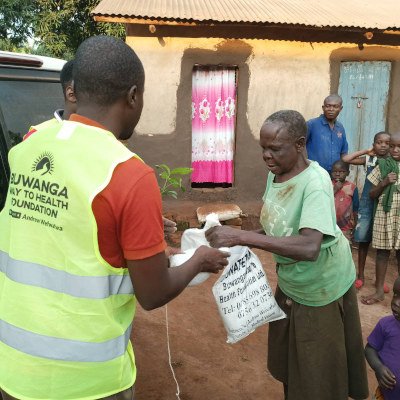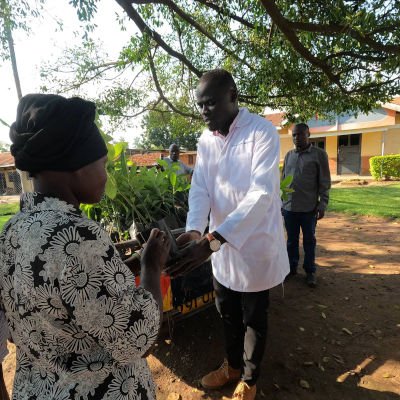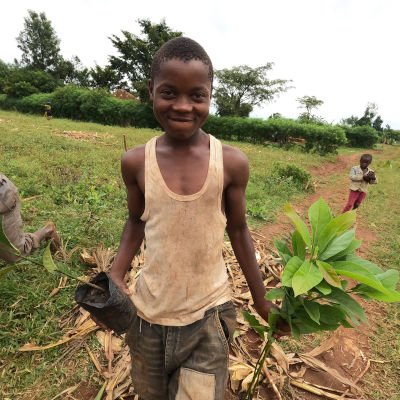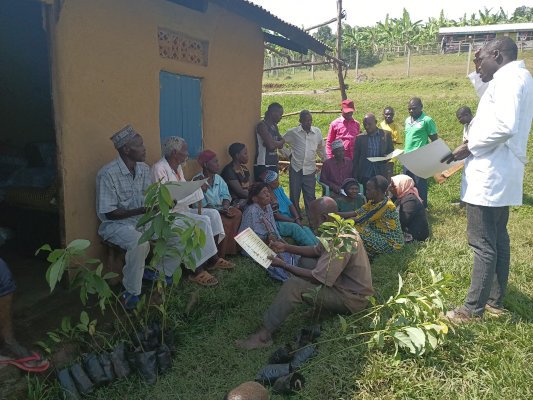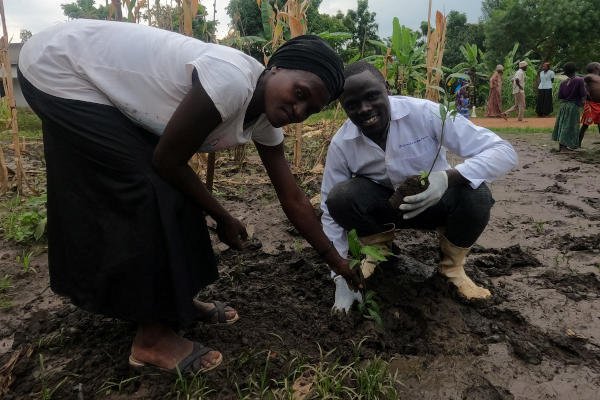Food Relief Distribution
A report on food relief distribution to flood victims in Mbale district, Eastern Uganda that happened in the month of August 2022
Our Motto: Shining the light into the darkness
Acknowledgements
The success of this relief aid project was as a result of collective social responsibility of all stakeholders and loyal partners of Buwanga Way to Health Foundation who deserve special appreciation and recognition.
We would like to start by thanking the almighty God who gave us life and hearts that are selfless and caring to those who are needy and live in vulnerable conditions. This enabled us to carry out the task with love, care, respect and passion to humanity.
Appreciation goes to the ever-ready kindhearted donors from around the world who managed to contribute financially after viewing the incidence on our YouTube channel. May God bless you abundantly and as for us, the organisation, we recognise and appreciate your individual efforts and contributions towards our voluntary work in the community. The victims were very happy to receive food and send their many appreciations through us to you that they were glad to receive this aid, felt helped and indeed were happy to receive it at those challenging times.
Our staff were very hardworking and distributed trees and food and consoled those families who lost their loved ones. Therefore, the management is very proud of you and commends the work you did, not forgetting the local council leadership who helped us to rollcall and direct us to the people who were seriously affected by the flood and the well-wishers. May God bless you all abundantly.
Background
Mbale district is one of the prominent districts in Eastern Uganda that is located on the slopes of Mt Elgon and bordering Kenya on the east. The rainfall that abruptly occurred on the 1st of August 2022 and rained overnight caused overflow of water from river Namatala and river Namayonyo, which passes through the town centre, to flood and claimed over 32 lives. Crops, animals and settlements were washed away. The areas of Nabitiri, lwaso, Namakwekwe, Namatala, Mutoto, Mooni, Bugema, South Central, Islamic University in Uganda, Nambijjo and Booma are built on road reserves, sewerage lines, street alleys and wetlands and therefore were seriously affected by this incidence. It was our responsibility as the community based organisation to grieve together and lend a hand of help to our people who were grossly helpless after the flood.
Objectives
- To distribute relief food to the flood victims
- To demonstrate and supply fruit tree seedlings to the affected communities in order for people to appreciate good environmental practises
- To evaluate the effect of the disaster on the health of the victims so as to teach and treat them
Targeted Population and Households
In our preliminary plan according to our resources, we targeted to visit at least 500 homes out of over 3,000 affected households and distribute 5 kilograms of maize, around 3 kilograms of beans, and 10 trees to mostly damaged homes.
Estimated Budget and Actual Expenditures
(/= is Ugandan shillings.)
| Particulars | Quantity | Unit Cost | Total Estimate | Total Actual Expenses |
|---|---|---|---|---|
| Maize floor (grade 1) | 2500 kg | 3,000/= | 7,500,000/= | 7,500,000/= |
| Beans | 1600 kg | 3,500/= | 5,600,000/= | 5,600,000/= |
| Avocado seedlings | 1000 | 500/= | 500,000/= | 500,000/= |
| Mango seedlings | 3000 | 500/= | 1,500,000/= | 1,500,000/= |
| Staff and labour allowances | 12 (6 days) | 100,000/= | 1,200,000/= | 1,300,000/= |
| Transport (fuel and hiring) | 1,450,000/= | 1,500,000/= | ||
| Packaging | 600,000/= | 526,000/= | ||
| Meals | 15 (6 days) | 60,000/= | 900,000/= | 1,000,000/= |
| Advertising and mobilisation | 2 radio announcements | 400,000/= | 475,000/= | |
| Grand total | 19,650,000/= | 19,901,000/= |
Notes
We managed to visit ten villages: Namatala, Namanyonyi, Bugema, Lwaso, Doko, Namabasa, Nabuyonga raise, Mission cell, Musoto, Islamic University in Uganda.
We visited 482 households, each receiving 5kg of maize floor, 3kg of beans, while trees were given according to land that a given victim possessed. The remaining items were given to some church members and volunteers who helped in the process of distribution.
It was found that the Mbale flood food relief project cost 19,901,000/= Ugandan shillings – equivalent to USD 5,306.
Some of the beans and trees that we distributed had been grown on the organisation’s land.
Distribution Methodology
The food and seedlings were bought from a reliable source, tested and packaged in sacks with a printed logo of our organisation. This was later stored at the church as a collection centre.
We trained and briefed our staff beforehand on their duties.
Food and trees were transported using our organisation’s vehicle and we hired 4 bodaboda riders to enable us to reach deep areas on the victims’ side.
The prior records we registered using local council offices helped us call people and congregate them for lessons before visiting their homes and planting trees in their gardens.
Findings
There were 32 people killed by the floods – 4 children and 28 adults.
The areas we visited included 6 farms where animals were washed away – 2 poultry farms and 4 piggery farms losing about 200 pigs at Nabuyonga bridge.
Uncounted crop fields of mostly vegetables like cabbages, maize and tomatoes were completely destroyed by floods.
People were homeless and most of them had shifted to neighbourhoods and schools. Assorted household items like beddings and utensils were washed away and about 25 houses were completely broken down.
Achievements
Food was distributed to 482 homes. Each received 5 kg of maize floor, 3 kg of beans and at least 8 trees.
We successfully diagnosed cough, malaria and some 23 cases of diarrhoea and gave out antibiotic tablets to some people. Teaching on waterborne diseases was done by the director at each congregation point.
Our pastors had the chance with the team to interview, preach a message of hope and comfort those who lost their loved ones.
Challenges
- Overwhelming turnout of people who wanted food and yet some others were not affected.
- Harsh mud and navigation to areas where the victims stayed and to find them since some had relocated.
Photo Gallery


Videos


















